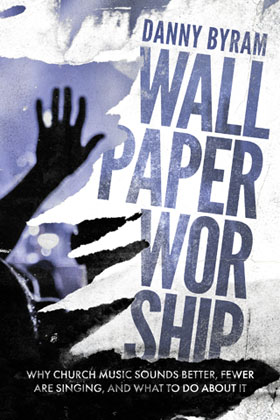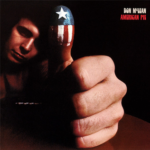loading...

by Danny Byram | May 11, 2020 | christian worship, church, Church Leadership, Coronavirus, COVID19, Leadership, prayer, Surprise, Worship

On Sunday, January 5, Angela and I heard a new year’s sermon we thought was gutsy, thoughtful, realistic, and now, prophetic. This pastor told his congregation “This year may be the worst year of your life, filled with death, destruction, fear, and mayhem. To tell you ‘happy new year’ may be the most painful thing you could be told.” Yet he spoke of trust in God, that even what could turn out to be your worst year, could be your greatest. Personally, I don’t like sermons that point to victory without embracing hardship. This pastor minced no words. He was honest and mature.
Interesting how little we knew a few months ago, isn’t it? Needless to say, our plans for 2020 have come to a screeching halt. Like you, we are waiting, preparing, praying, and listening.
Last year, I read a book entitled “The Sin Of Certainty” by Peter Enns. In this challenging and often uncomfortable book, Enns says: “When we reach that point where things simply make no sense when our thinking about God and life no longer line up, when any sense of certainty is gone, and when we can find no reason to trust God but we still do, that is what trust looks like at its brightest.”
We see this “trusting-God-when-all-else-fails” throughout Bible stories and church history. (See my blog of March 29.) Yet as 21st century Americans, we shelter ourselves from experiencing hardships that make us “trust God when all else fails.” Sure, there are those who have experienced great personal tragedy: loss of a loved one, a failed business, loss of a job. Yet, so often the American dream and much of our Christian messages morph into figuring out how to put ourselves in a position where “all else fails” doesn’t happen.
Until now.
Never in our lifetime have we experienced anything on the global scale like we are witnessing through the COVID-19 pandemic, and the economic ruin that likely awaits us as we stagger through months of quarantine and sequestering. No one can predict what the results of this parenthetical time will be.
So, here are some questions we must ask ourselves: Will we trust God in sickness, in health, in death as well as in life? Or are we frustrated God is not producing what we want when we want it? Or worse, are we running scared?
As for me, I refuse to offer glib answers and clichés. I simply want to encourage myself and my family to walk the way others before us have walked through plagues, famines, and hardships in life and death. All we can do is trust the living and eternal triune God of the scriptures. In the end, we will see: trusting Him is enough.
I believe our 2020 plans are not for naught. In the meantime, we wait; we trust. We must.
“Come my people, enter into your rooms and close the door behind you. Hide for a little while until indignation runs its course.” Isaiah 26:20


by Danny Byram | Feb 28, 2020 | christian worship, church, Church Leadership, Leadership, Music & Songwriting, pastor, wallpaper worship, Worship, worship songs, worshipleader, worshipmusic

If you’re thinking “Oh brother! Here we go…another legalistic churchy rule,” stay with me. It’s not. Let’s level the field: if you’re using pop songs in worship, I do not universally condemn it.
When I was on a large church staff with a wide talent pool, I used to perform pop songs periodically and really enjoyed it. It was a thrill to connect a lyrical parallel in a popular song with a sermon and to make the song sound like the recording performed live.
IT CAN WORK
One of my most effective experiences was when our pastor gave a sermon on “God wants you to join Him in His dance.” He used a clip from the Tom Hanks’ 1999 prison movie The Green Mile, in which the condemned prisoner, who happens to be innocent, has eaten his last meal before being executed and is watching his last movie, a 1930s classic with Fred Astaire and Ginger Rogers (For Those of You With No Connection to the Past, acronym FTYWNCP, Fred & Ginger were an acting/dance team that killed it in the ballroom style). The song they danced to, in the scene the prisoner watches, is “Dancing Cheek To Cheek.” (FTYWNCP, check it out on YouTube.) Watching Fred and Ginger, the prisoner says in tears, “This must be heaven. They look like angels…”
Our church’s tradition was to end each sermon with communion while the band played as people went through the line for the elements. For communion music that day we played “Dancing Cheek To Cheek.” People were in tears as they connected the sermon with communion through the song. God was inviting them to “dance with Him” and they did.
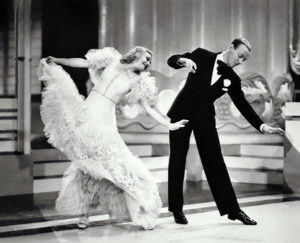
SO, IS THERE A PROBLEM?
Consider: We, in the worship music industry, have become so good at live performance (the American church spends $2 billion/year of its budgets on music/theatrical production gear) that often we perform pop songs “just because we know how.” Someone shared with me about a Nirvana song that opened a service at a megachurch. I asked, “Was it related to the sermon or service theme?” “Not that I saw or heard,” he responded. “It was just really cool.”
I have heard and seen performances in worship services of songs by Aerosmith, Justin Timberlake, Beyonce and others that are done – a) because the band knows how to and wanted to – b) to invite the unbeliever into an atmosphere that is familiar and non-threatening.
Do we really play to so many un-believers in our local worship service that we feel setting the atmosphere at their level of understanding achieves a worthy goal? If the purpose is to win them to the Gospel, is it working?
Gallup Research conducted a study of churches county by county in the USA, to find out what large and small churches spend ($) to pull off weekend worship services, and the result thereof. The study took into account building/venue costs, salaries of those who are required to execute the weekend productions (pastors, associates, musicians, crew, teachers), printed materials given away, licensing fees for use of song copyrights (CCLI), coffee bars and other related expenses. Add the $2B/year of gear purchased from production retailers. Divide those numbers by how many individuals the churches report who make life-changing commitments to the Gospel as a result of the weekend productions. Gallup’s results are that it costs the church over $1 million to convert one non-believer. If we presented this financial idea on TVs Shark Tank, the investors would pass.

THE IDEA HERE IS NOT TO SHAME US, BUT TO AWAKEN US.
Jesus’ words can guide us as we make decisions on how to musically shepherd our “audience” (aka Jesus’ sheep): “I know my sheep and they know me and hear my voice, just as my Father knows me and I know the Father. My sheep will not listen to a hired hand. A hired hand will abandon the sheep because they don’t belong to him; he runs away because he’s working only for the money and doesn’t really care about the sheep.” John 10
Why spend our time in service-planning and rehearsals to perform a song that has nothing to do with a sermon or a scriptural theme – because we want to be approved of by people who don’t know the Savior we are trying to “sell” them? What about the sheep of the Shepherd, our congregants – who come to weekend services for spiritual renewal, refreshment and teaching of the word of God? Do unrelatable pop songs – which they hear every day anyway – help meet their needs?
Francis Chan, in his book Letters To The Church said: “People are either awed by the sacred or they are not. We (leaders) have addicted our people to less.”
I quit using pop songs simply because my time leading His sheep is limited, both in the allotted weekend time and in how many weekends I have left on this planet. I choose to play to the sheep and their needs. Non-believers are welcome to come along as the Holy Spirit draws them.
I welcome your comments below. What’s your experience?
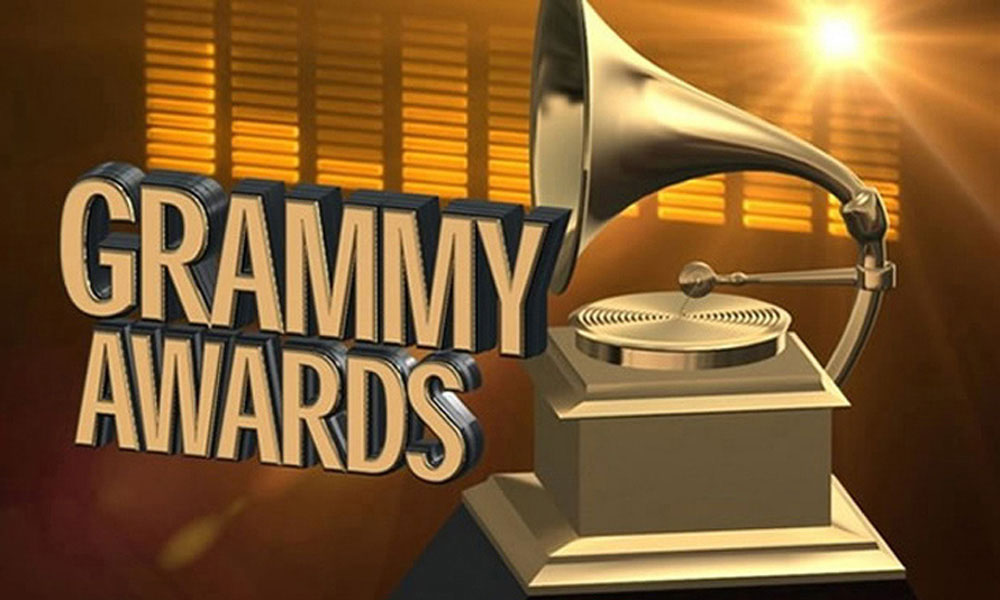
by Danny Byram | Jan 27, 2020 | christian worship, christianmusic, church, Church Leadership, Contemporary, Leadership, Music & Songwriting, pastor, praise, wallpaper worship, Worship, worship songs, worshipleader, worshipmusic
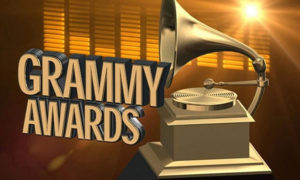
The word worship has metamorphosed. It is one of those many words floating around that once had specific meaning but has culturally morphed into new relevance. Other examples: thread, stream, post – you get the idea.
Worship used to be primarily a verb – something we did corporately or privately when we gather into a house of worship. Now it is also a noun, a traded commodity, a multi-billion-dollar industry tied to the entertainment and production-gear retail world, akin to the latest talent reality shows, playing to millions of unnamed, anonymous online fans of worship songs and worship artists. Worship has become its own style of music.
Am I cynical or a realist? Probably both. Before you go off on me with this, first consider the reactions I frequently hear from semi-professional church musicians. They cringe at playing a hymn or any music piece outside the worship model. Yet, many equally cringe with many new songs they are required to memorize. Why the cringing? Musicians will confess – quietly, behind the scenes – the musicality of worship lacks in diversity or musical creativity. In other words, if they are honest, musicians will tell you that as a style of music, worship becomes quickly rote and predictable.

Example: I had to learn the latest 12-15 most popular worship songs for an upcoming conference. I found each song on YouTube and began my rehearsal. Most start with a low synth pad sound, covered in a breathy vocal line. Then follows the rhythmic groove with guitar, bass and drums. Each track has a simple riff (ie, a basic scale pattern meant to be a musical hook played by a lead guitar or piano). Many of these riffs are so similar, it’s difficult to discern which song I am in when I hear it. They are purposely simple so they can be reproduced by volunteer musicians possessing basic skill levels; I get it.
By the middle of the songs, vocalists are full voice, the band is playing the 1-4-6-5 chord progression (or 1-5-6-4, 1-6-5-4 or another variation). There is a full synth pad or guitar distortion pedal sound underlying everything to give a pop power-ballad sound. Eventually most songs will end as they start, finally capped with a cymbal-swell cadence, giving the audience their cue to applaud.
There you have it. Worship is a musical style, a specific sound. To use music outside this model in worship, or an original arrangement of a current song, risks being pegged as out of touch or old school. It assumes congregants will not accept anything other than “the way it sounds on the radio.” Flash: not all congregants listen to “worship radio” which may be why so many simply squint and stare during music segments.

It amazes me how many styles of music are out there, being enjoyed, EXCEPT in church. Watch the Grammy Awards or the Academy Awards show and count how many styles of music are used in these productions: acoustic, jazz, classical, choral, gospel, country, folk, hip hop, alternative, Broadway. There are so many great choices to enjoy, except in worship.
Recently I had a short-lived conversation with a leader of one of the big worship companies (I won’t name the company because you’d know them). I asked him, “What if an oboe or clarinet player came up to you in church and asked how he/she could fit into the worship ministry – what would you say?” His response: “I have no idea.”
“A garden’s beauty never lies in one flower.”
― Matshona Dhliwayo
I am dying to hear comments from anyone experiencing musical creativity in sound, style and execution in your worship services. Are you out there?

by Danny Byram | Nov 22, 2019 | Advent, christian worship, christianmusic, Christmas, church, Church Leadership, pastor, Worship, worshipleader

The first Christmas after my wife and I moved into a new community a few years ago, we attended a number of local Christmas worship services.
At one popular church, we were greeted by elves issuing earplugs at the doors. The lead guitarist illustrated his skill in pulling off a “Christmas-shredding-solo,” while the female lead singer pranced about the stage in skin-tight black leather with a red Christmas bandana across her head. To their credit, the Christmas story was read by the pastor, but he hesitated throughout the reading as he awkwardly tried to pause and pace for the canned video/musical cues that were supposed to match his narration. I felt like standing up and yelling, “Just read the story to us!”
In another church, we heard the Luke 2 narrative of the angels’ visitation of the shepherds in the field “keeping watch over their flocks by night.” She (an associate pastor) said, “those shepherds weren’t just frightened. They had the BA-JESUS scared out of them.” We left.
Finally, we attended another church with a more traditional approach. They performed a Christmas cantata, complete with orchestra, choir, soloists and narration. All the of the carols were performed for us, with the conductor turning around to cue the audience when we were allowed to sing along on one verse or a chorus (“Glo-o-o-o-o-or-or-or-or-or-o-o-o-o-oria”) – only to cut off the singalong, turn back around to re-cue the orchestra and choir for the next pre-arranged segment. As we stared mostly at the conductor’s backside all evening, listening to “Christmas-sung-for-us,” our daughter turned to me and said, “Dad, you talk about wallpaper worship? This is it!”
Each of these examples is real. Each happened within a few miles of our house. Recalling each experience gives me a feeling of dread as we stare at the upcoming Christmas season.
I have always felt there are certain holidays in our church-worship-year that nudge corporate worship to be executed differently than our regular weekly services. Christmas is the easiest of church holidays for church leaders to NOT screw up – but we manage to do so anyway. With all the latest worship resources, flashy gear, hip song arrangements and YouTube clips to mimic (posted by huge churches and commercial worship companies who have better talent and more money than most local churches have), it is tempting to employ every tool at our church’s disposal and unleash it all on our heaviest attended service.
With the retail world already unleashing Christmas hype on us by October, is being “unleashed on” what our congregants want or need on Christmas Eve? With all the noisy and crowded places church-goers frequent during the holidays (malls, shops, restaurants, parties) perhaps congregants would consider their church leadership incredibly creative and brave for delivering a Christmas Eve worship experience that’s simple, real and authentic.
You know…simple, real, authentic – kind of like how Jesus entered the world.
In her Washington Post op/ed a few years ago, millennial Rachel Held Evans wrote: “The trick isn’t to make church cool; it’s to keep worship weird. You can be dazzled by a light show at a concert on any given weekend, but church is the only place that fills a sanctuary with candlelight and hymns on Christmas Eve.”
This year – if you’re a leader – why not plan a Christmas Eve service that is simple, real and authentic? If you are an attendee, chances are good that you will leave a simple, real and authentic Christmas Eve service thinking: “Thank you! That was refreshing.”
“The perfect church service would have been the one we were almost unaware of; our attention would have been on God. But every novelty prevents this.” – C.S. Lewis
__________________________
If you are a leader in a smaller church (or you know one!) and you are wondering what to do for Christmas Eve, we are launching a 3-part online training course: LEADING A CHRISTMAS EVE SERVICE YOUR CONGREGANTS WILL THANK YOU FOR. This course will give you tips, ideas and proven principles that are usable in any church culture. The course launches Friday, November 22 and run through December 3. Cost: $99. Give your church a Christmas Eve service this year that they will thank you for. Sign up for the course HERE!

by Danny Byram | Oct 30, 2019 | christianmusic, church, Church Leadership, Contemporary, Liturgical, Music & Songwriting, pastor, Traditional, wallpaper worship, Worship, worship songs, worshipleader, worshipmusic

Ever been to a quiet, classy restaurant with your sweetie? White tablecloth – pressed napkins – two candles – rose in a vase. It’s relaxing just imagining it. Your well-dressed waiter appears and gives you the evening’s specials from memory. After taking your wine order, he leaves to allow you to choose your evening meal. You two are taking in the atmosphere: Low lights – smooth jazz in the background – and staring into the eyes of the only person you want to be with, in this setting.
As you begin your long-awaited conversation, the waiter returns to pour your wine and take your entrée order. He disappears and you continue to talk together, alone. The waiter returns to ask for a clarification, which you politely give. He leaves, your conversation resumes.
The waiter returns to repour your water glasses and asks how the wine tastes. You give him a positive nod. He then puts down his water pitcher, pulls up a chair and begins to explain the differences between California wine and Italian wine. He leaves again. You try to resume your conversation only to be interrupted again by the waiter serving the appetizers. He then gives you a full description of where the pigs, used in your bacon-wrapped appetizer, were raised and fed. He leaves. You try to remember where you left your conversation, only to be interrupted again by the delivery of your entrees. This time the waiter doesn’t leave. He sits in the chair he previously pulled up, watches you eat, and gives you factual information of how the chef prepared your meal.
The point of your evening is lost. The interruptions have broken the intimate conversation you came to enjoy.
Worship can be like that.
On Sunday, at church, the musicians have chosen a great set of songs. They tastefully lead you, the worshiper, to a place of intimacy, devotion, and readiness to receive something spiritual. You are poised. You are ready. Like the soft jazz in the restaurant, the keyboardist is padding quietly.
Suddenly, the associate pastor jumps on the stage: “Everybody having a good time? Hey! How many of you have signed up for the All-Church Retreat? Lemme see the hands. Woo-hoo! Also, we need more workers in the nursery. It’s a great way of serving and you’ll be blessed. Sign up in the lobby. And for anyone who’s into communion, make sure you grab a wafer pak in the baskets by the doors at some point during the service. Now give someone a HIGH FIVE!”
I call this WORSHIP INTERRUPTUS. It happens too often.
Back to the restaurant: You came to have a meaningful, intimate experience with the love of your life – only to have it shanghaied by an obnoxious waiter.
Back to the church: You came to have a meaningful, intimate experience with the Love Of Your Life (Jesus Christ), only to have it shanghaied by a leader who fails to understand the importance of FLOW OF SERVICE, PLATFORM ETIQUETTE, INTIMACY VERSUS INTERRUPTUS.
When we as platform leaders take our people to a vertical point in time – a moment of spiritual readiness – and then immediately reverse that moment, we jerk our congregants from vertical to horizontal – from heaven to earth – from God to one another – from one another to an annoying “waiter” on the platform.
This isn’t rocket science. Yet, its frequency is disturbing.
The Apostle Paul admonishes his confused congregants and frustrated leaders at the church in Corinth: “All things should be done decently and in order.” (I Corinthians 14:40) King Solomon understood the bigger picture: “There is a time to weep and a time to dance; a time to keep silent and a time to speak.”
“Oh, I know,” church leaders say. “Where to put the announcements is a constant struggle.” There are many solutions to this problem and one size does not fit all. But wherever we put announcements, we must not lose sight of the larger purpose of our gathering: to lead the sheep to the living water, so they can actually drink it.
“For everything there is a season, a time for every activity under heaven.” Ecclesiastes 3
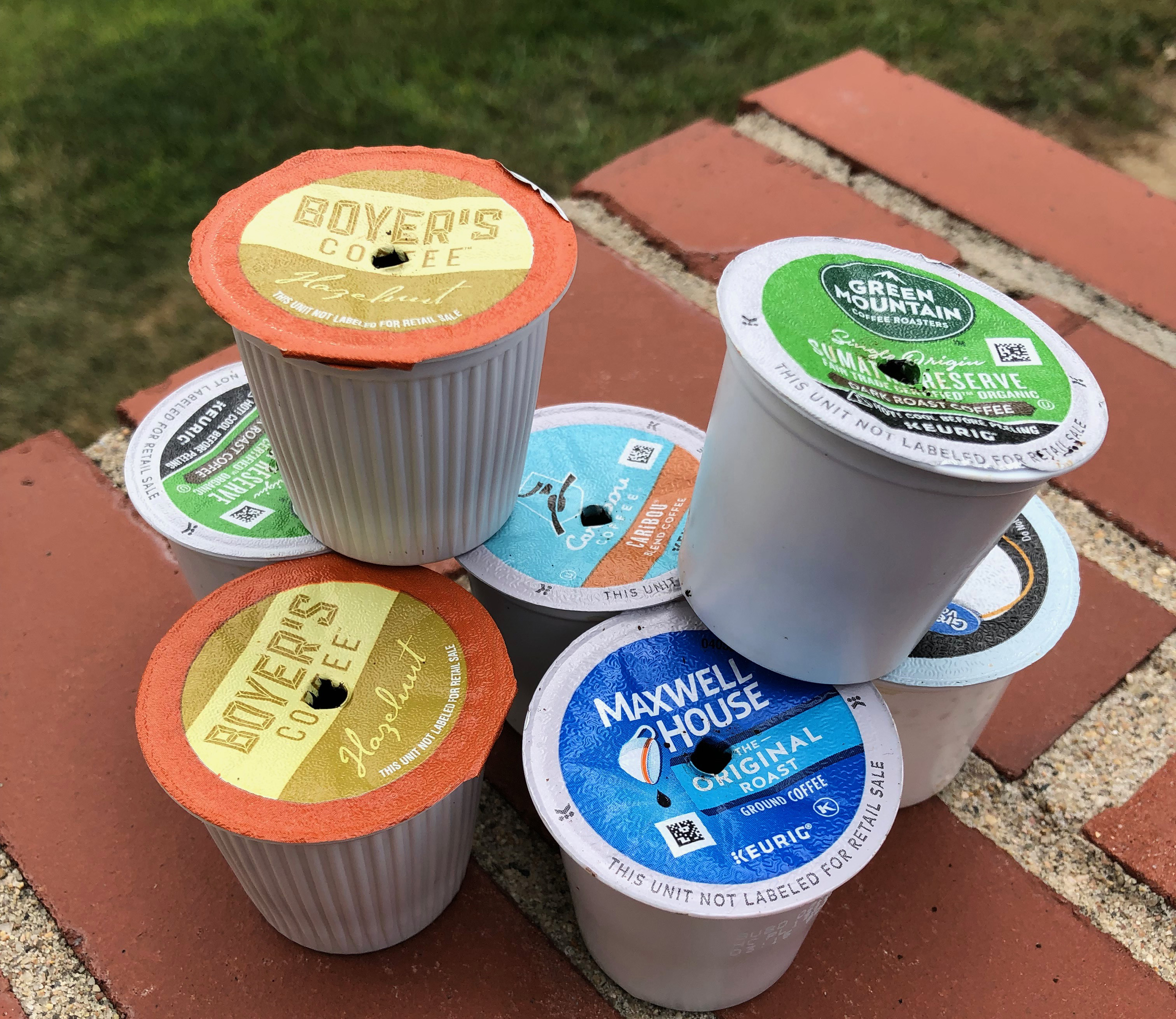
by Danny Byram | Sep 27, 2019 | christian worship, christianmusic, church, Church Leadership, Contemporary, Leadership, Liturgical, pastor, praise, Traditional, wallpaper worship, Worship, worship songs, worshipleader

Each morning I put a K-CUP in my Keurig. It produces a decent single cup of morning coffee experience. Then I prepare one for my spouse. I discard the first one and repeat the process. There have been many times I have stared at the plethora of K-CUPs in my kitchen trash, only to grieve their short-lived lives. If you have tried producing another cup of coffee with a used K-CUP, you know the results are less than satisfying. It’s as if the K-CUP says: “Hey! You already used me. I’m done. Move on!”
Modern worship song repertoire can be like that.
Worship leaders are finding it difficult to keep up with the amount of new songs coming into the marketplace. (CCLI has over 100,000 worship songs in its catalog. Spotify reports 40,000 new songs added daily.) Leaders and congregants can get frustrated because there is not enough time to repeat a song to endear it to the hearts of listeners. Too often the result is silent church-goers staring at song lyrics they heard maybe once, somewhere in their week – or was it from last week’s service? With the barrage of material coming at us, many songs are used once and then discarded. K CUP worship songs.
I recently heard of a pastor who told his music team not to use any songs that are over 6 months old. There are a lot of K-CUPs in that worship leader’s trash. I mean, when was the last time you heard the 1990s hit “Shout To The Lord” used in a worship service? Even though I may hear from someone who used it just last week (bless their heart), the point stands: Worship songs we were singing even a few years ago are long gone, out-mode, like used K CUPS: “Hey! You already used me. I’m done. Move on!”

In my WORSHIP WORSKHOP and in my book WALLPAPER WORSHIP, I emphasize the idea that worship (not simply music) is, among many things, our HERITAGE. Harkening to the past is not anti-contemporary. It is ANAMNESIS, the “art of remembering.” Realized or not, when we worship through music or other rituals, we stand on the shoulders of those who went before us.
The classic hymns were the body of song material used by Protestant churches for centuries. Though there were thousands, not all hymns survived. English hymnwriter Isaac Watts (When I Survey The Wondrous Cross, Joy To The World) wrote over 6,000 in the early 18th century. Fanny Crosby, early 20th century American (Pass Me Not O Gentle Savior, Blessed Assurance) wrote over 9,000. Though much of the hymn repertoire is gone, hundreds remain part of our modern heritage of worship music. With today’s songs so quickly discarded, I often wonder if any of our modern songs will stand the test of time? (Be Thou My Vision is cr. 9th century. How’s that for passing the test of time?)
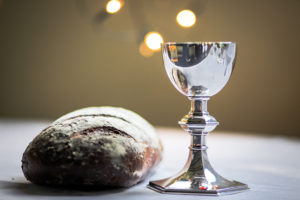
It’s not just our songs (modern or from antiquity) we’ve discarded. We’ve managed to reduce the communion sacrament to a K-CUP. When pastors fail to explain communion to worshipers, and shrink-wrapped communion cups are offered from a basket somewhere in a corner, the implied message: “Take it at your leisure. Put it under your seat or in your purse for later. Take it in the bathroom, the parking lot, wherever or whenever you want.” The only instruction we actually receive: “Make sure to properly dispose of the shrink wrap and the cup in the trash receptacles.” K-CUP Communion.
If we discard most of the songs of our faith in a few years, and we fail to lead people in worship through the richness of experiencing communion corporately, what other elements of our worship heritage are we willing to discard like K-CUPS?
“All that now is will be forgotten in the days to come.” – Ecclesiastes 2:16 (NKJV)
(Let us read your comments, whether you’re experiencing the KCUP phenomenon OR if your worship situation is balanced and fulfilling.)


















